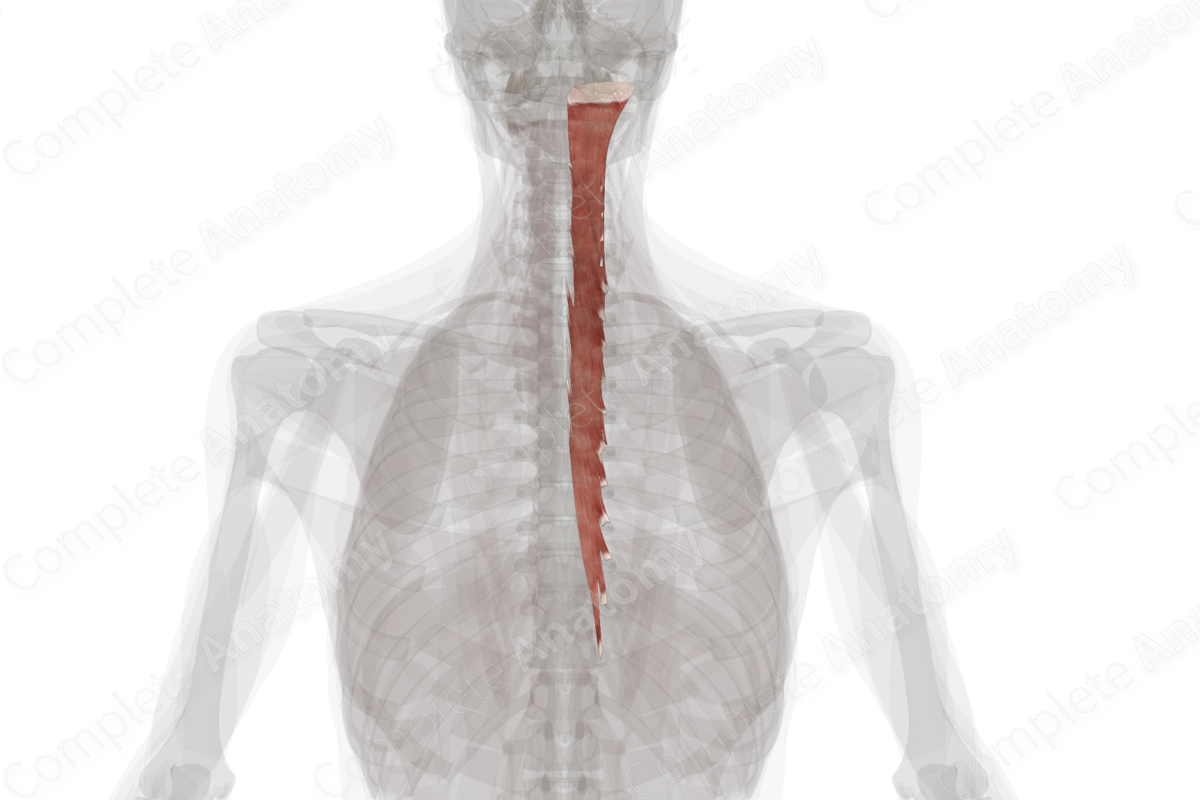
Quick Facts
Origin: Superior articular processes of C4-C7 vertebrae and transverse processes of T1-T11 vertebrae.
Insertion: Area located between superior and inferior nuchal lines of occipital bone and spinous processes of C2-T4 vertebrae.
Action: Extends and rotates the head, neck, and trunk.
Innervation: Greater occipital (C2) and third cervical nerves, medial branches of posterior rami of lower cervical and thoracic nerves.
Arterial Supply: Occipital, deep cervical, and vertebral arteries, dorsal branches of posterior intercostal arteries.
Related parts of the anatomy
Origin
The semispinalis muscles originate from the:
- superior articular processes of the fourth to seventh cervical vertebrae;
- transverse processes of the first to eleventh thoracic vertebrae.
There can be variations between individuals regarding the origin sites for the semispinalis muscles (Tubbs, Shoja and Loukas, 2016).
Insertion
The fibers of the semispinalis muscles travel superiorly along the upper back and posterior neck regions and insert onto the:
- area of the occipital bone that is located between the superior and inferior nuchal lines;
- spinous processes of the axis (second cervical vertebra) to fourth thoracic vertebrae.
There can be variations between individuals regarding the insertion sites for the semispinalis muscles (Tubbs, Shoja and Loukas, 2016).
Key Features & Anatomical Relations
Overall, the semispinalis muscles are the more superficial of the three muscles of the transversospinal muscles. They are intrinsic muscles of the back and are found along the upper back and posterior neck regions. They are long, flat skeletal muscles that are composed of three parts:
- semispinalis capitis, which is the superior portion;
- semispinalis colli, which is the middle portion;
- semispinalis thoracis, which is the large, inferior portion.
The semispinalis muscles are located:
- superficial to the suboccipital and multifidus muscles;
- deep to the trapezius, splenius capitis, splenius colli, and erector spinae muscles;
- medial to the levatores costarum breves and longi muscles;
- lateral to the interspinales muscles.
Actions
The semispinalis muscles are involved in multiple actions:
- during unilateral contraction, they rotate the head, neck and trunk to the opposite side;
- during bilateral contraction, they extend the head, neck and trunk (Netter, 2011).
References
Netter, F. H. (2011) Atlas of Human Anatomy. Netter Basic Science Series: Saunders/Elsevier.
Tubbs, R. S., Shoja, M. M. and Loukas, M. (2016) Bergman's Comprehensive Encyclopedia of Human Anatomic Variation. Wiley.




